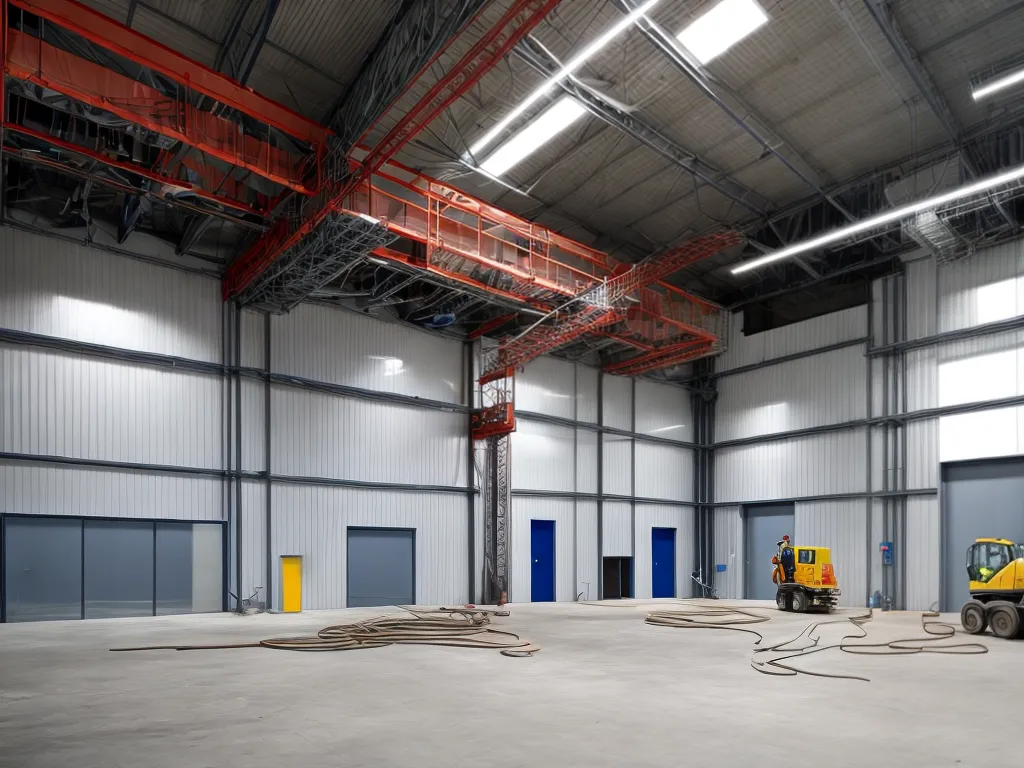
Safety Standards Often Overlooked in Industrial Buildings
Industrial buildings can present many safety hazards if proper precautions are not taken. As the safety manager for my company, I aim to ensure we meet all relevant safety standards to protect our employees. However, there are some key areas that are often overlooked or neglected in industrial settings.
Mezzanine Safety
Mezzanine floors are commonly installed in warehouses and manufacturing facilities to maximize space. However, these elevated structures introduce fall risks if not properly secured.
Guardrails and Gates
Mezzanines over 4 feet high are legally required to have guardrails on all open sides to prevent falls. Guardrails should be 42 inches high, with a mid-rail and toe board. Access gates should have self-closing hinges and locks to prevent entry without authorization.
Load Capacity Signs
The maximum load capacity of the mezzanine floor should be clearly posted with warning signs. Exceeding this limit could cause the structure to collapse. Regular inspections by a structural engineer help ensure the integrity of the mezzanine is maintained.
Fall Protection Anchors
For maintenance work conducted on top of mezzanines, fall protection anchors need to be installed. Workers should be equipped with harnesses and lanyards to tie off to the anchor points when working at height.
Electrical Safety
Improperly installed or maintained electrical systems can lead to shock, electrocution, fires, and equipment damage.
Conduit Installation
All electrical wiring running through industrial facilities should be enclosed in metal conduits. This protects the cables from environmental damage and prevents exposed wires. Rigid steel conduit provides the greatest level of protection.
Overcurrent Protection
Circuit breakers and fuses must be sized appropriately to the wire gauge and loads on each electrical circuit. This overcurrent protection cuts power in the event of a short circuit or overload to prevent fires. A qualified electrician should assess and document the ratings for all protection devices.
Equipment Grounding
All metal non-current carrying parts of electrical equipment must be grounded via a dedicated conductor. This provides a safe path to dissipate voltage in the case of a fault. Regular testing should confirm electrical continuity from equipment to the grounding conductor.
Machine Guarding
Industrial machinery has many moving parts that can cause severe crush and amputation hazards.
Point of Operation Guards
The most hazardous areas on machines are the points of operation - where work is performed. Machines should have properly installed guards to prevent access to moving parts in these areas. Guards should not obstruct the view of the operation.
Emergency Stops
Clearly identified and unobstructed emergency stop buttons should be installed on all industrial machinery. When activated, these stop controls cut power to the machine to prevent or stop hazardous motion. The e-stops should be tested on a periodic basis.
Machine Maintenance
Preventative maintenance programs help ensure all machine safeguards remain intact and functional. Damaged guards should be replaced immediately. Software-controlled machines may require password protection and diagnostics to prevent tampering.
While not exhaustive, focusing on these three key areas will significantly improve safety in an industrial environment. However, it is critical to conduct regular safety audits and inspections. Identifying and correcting hazards proactively is the only way to prevent tragic accidents and ensure regulatory compliance. The safety of employees should always be the top priority.